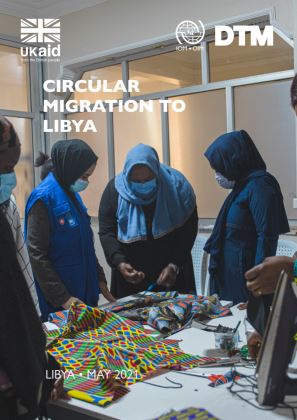-
Countries
-
Data and Analysis
-
Special Focus
-
Crisis Responses
Libya — Circular Migration to Libya (2020)

Contact
DTM Libya, DTMLibya@iom.int
Language
English
Location
Libya
Snapshot Date
Dec 31 2020
Activity
- Other
- Survey
- Flow Monitoring Survey
The study shows that circular migration to Libya represents a significant share of the overall migration influx to Libya, with estimates indicating that up to 13% of the migrant population in Libya could be identified as migrant workers employed on a seasonal basis and returning to their countries of origin at the end of the season.
A higher proportion of seasonal migrant workers interviewed (83%) were employed at the time of the survey compared to other migrants (74%) during 2020, where a large proportion of these migrants was employed in elementary occupations working on farms in agriculture and with livestock. However, seasonal migrant workers overall were employed in a diverse range of occupations and worked in wide variety of economic sectors including constriction, mining and manufacturing amongst others. 22% of the seasonal migrant workers employed at the time of the survey neither had a contract nor an oral agreement and were therefore working for daily wages without job security. Seasonal migrant workers primarily found jobs on a seasonal basis through word of mouth within their social networks that included fellow migrants and employers.
The COVID-19 pandemic was also found to have affected circular migration to Libya and the circumstances of seasonal migrant workers as local businesses employing seasonal workers were negatively impacted. During 2020 the demand for services of seasonal migrant workers was reported to have significantly
reduced due to economic impact of COVID-19, while the arrival of migrants on a seasonal basis had also declined due to mobility restrictions imposed to curb the spread of COVID-19. Some of the seasonal migrant workers who had made it to Libya before pandemic were reported to have temporarily been stranded at the end of the work season as they were unable to return, while others returned earlier to avoid being stuck. These trends indicate that 2020 was not a typical work year for seasonal migrant workers, nor a typical year for circular migration to Libya, and therefore data collection aimed at further understanding circular migration to Libya should continue during 2021.
